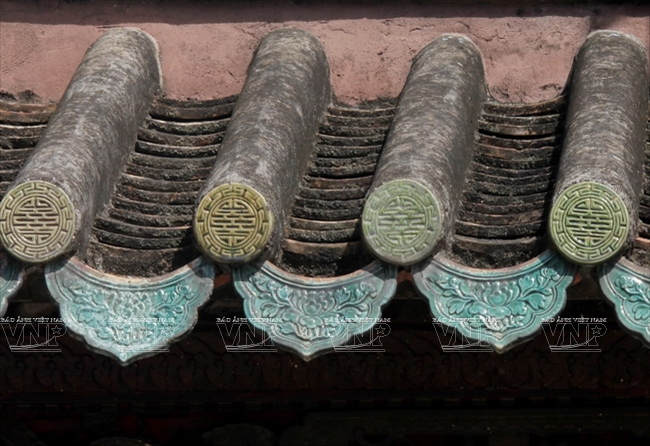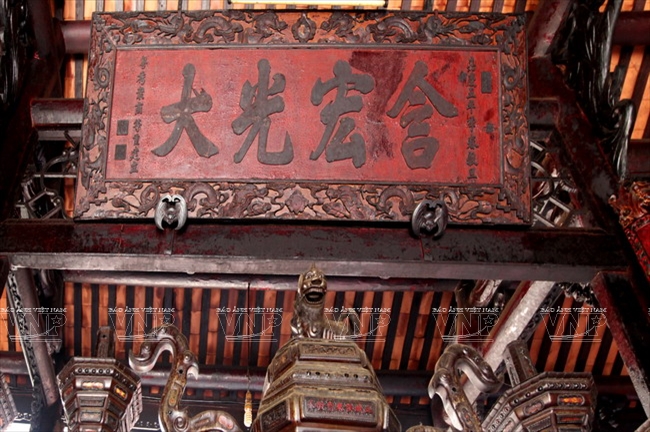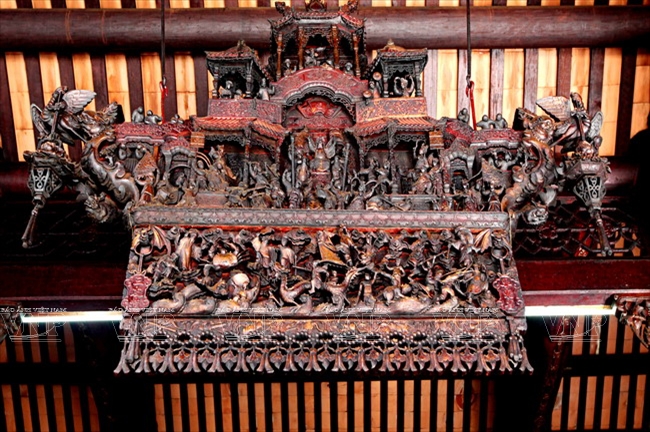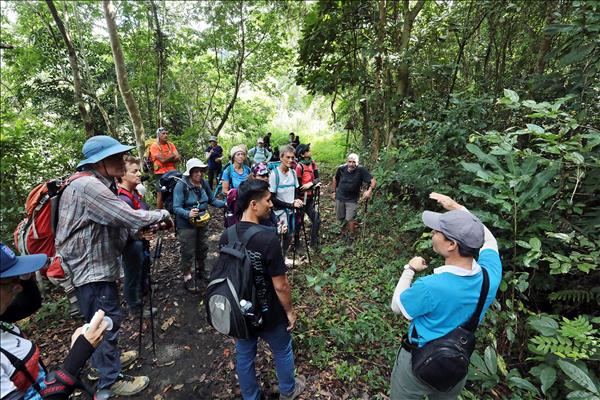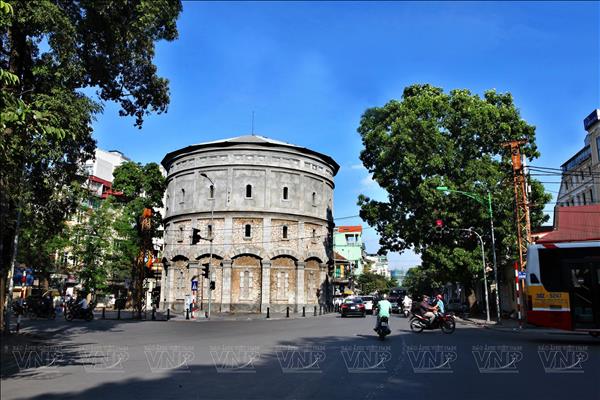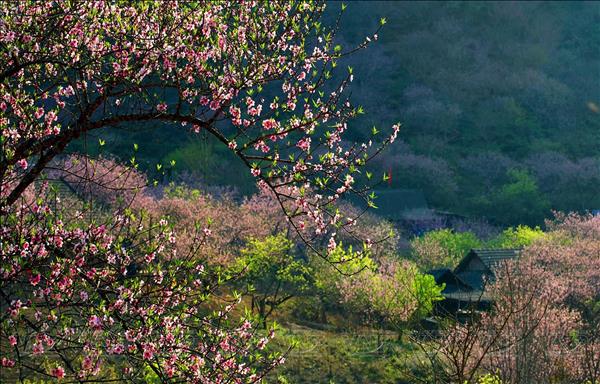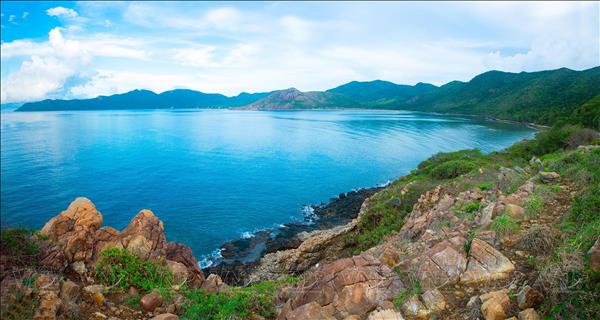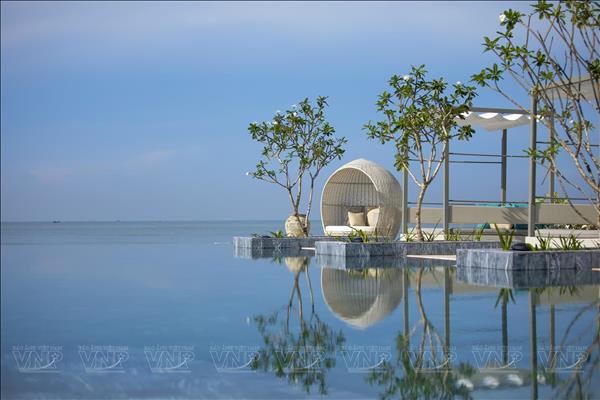Thien Hau Thanh Mau (Matsu) Temple plays an important role in the cultural and religious life of the Chinese, called the Hoa in Vietnamese, who came to settle down in Vietnam’s southern Saigon-Cho Lon area. They worship Matsu, a Chinese patron goddess who is said to protect seafarers, such as fishermen and sailors, and the site attracts many visitors due to its tranquil view and beautiful architecture.
Since the late 17th century, when moving from China to settle down in Vietnam’s Cho Lon (Big Market) area, the Hoa people established the area into their permanent settlement.
In 1760, a temple was built dedicated to Matsu, called Thien Hau Thanh Mau (Grandmother) in Vietnamese, with the unique architecture of the Hoa people. It has gone through many upgrades and repairs, but has preserved its original design and construction, which contributes to enriching the cultural features of the former Saigon-Gia Dinh location. The temple’s building materials, bricks, tile, and ceramic, which were transported from south China to Vietnam, have been well preserved.
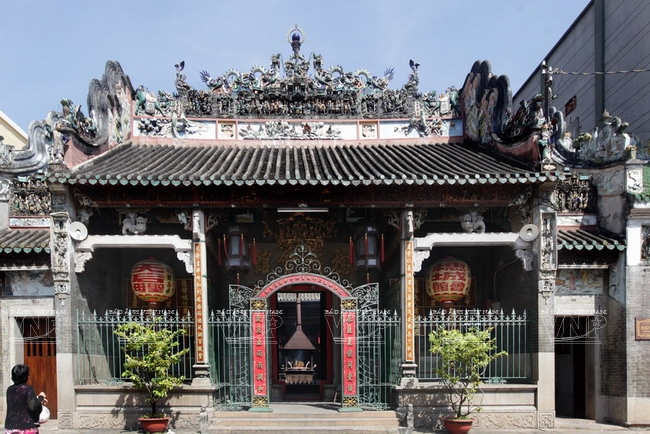 |
Thien Hau Thanh Mau Temple is a long-standing historical relic of significance in the religious life
of the Chinese Vietnamese (the Hoa) living in Saigon-Cho Lon area. |
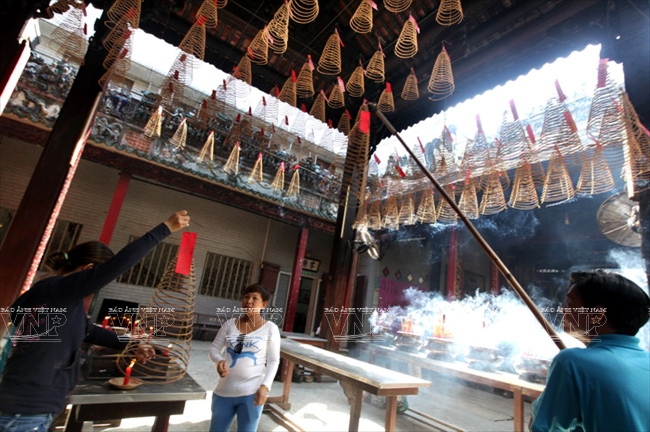 |
|
Incense coils are unique items in the Hoa’s religious beliefs. |
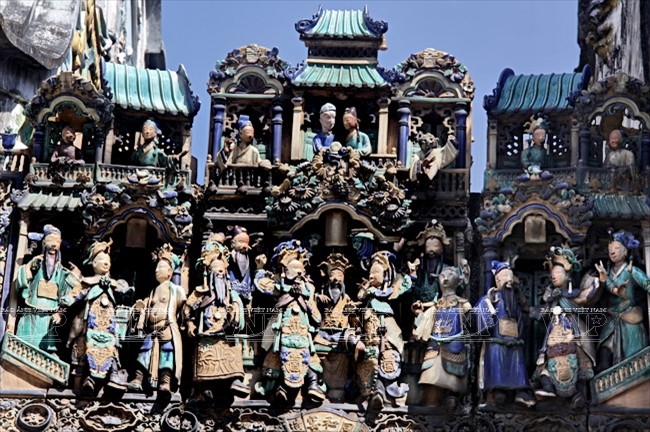 |
The temple’s roof is decorated with images of flowers, leaves and human beings
made of ceramics from Buu Nguyen and Dong Hoa kilns in 1908. |
|
|
|
The building materials were transported from China, including bricks, tiles and ceramics. |
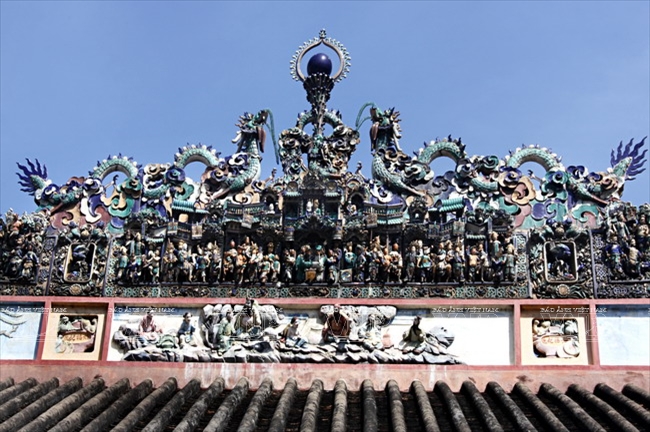 |
|
Ceramic decorations on “two dragons fighting for a gem”, the fairies and letters “co-exist in harmony”. |
 |
|
The temple’s three door entrance provides a clear and ventilated environment for visitors on crowded days. |
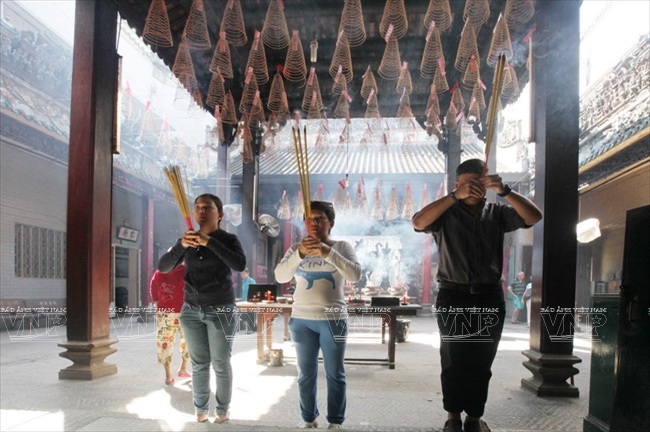 |
|
Worshippers at Thien Hau Thanh Mau Temple. |
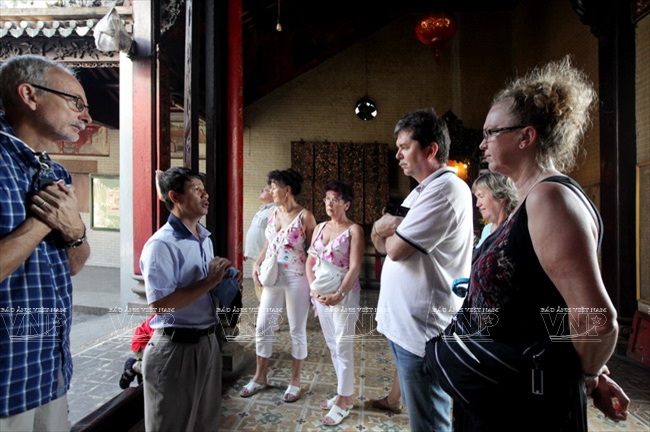 |
|
International tourists visit the temple. |
|
Legend has it that Thien Hau Thanh Mau was born in 1044, with the birth name Mi Chau, in Putian Country, Fijian Province of China, under the Tong Nhan Tong dynasty. One day, her father, Lam Tich Khanh, and her two brothers rowed a boat carrying salt to Jiangxi. On their way, there was a big storm. Mi Chau was at home with her mother, weaving fabric. She went out and tried to rescue her father and two brothers, but she could only save her brothers while her father was swept away by the big waves. After Mi Chau died, she was remembered as a young lady in a red dress, who would forever roam over the seas. Fishing boats offshore when having trouble used to pray to her for help. In 1110, she was given the title “Thien Hau Thanh Mau” (Matsu, or Grandmother) by the Song dynasty. |
In 1993, the Thien Hau Thanh Mau Temple was classified as a national architectural and arts relic.
Besides its value in terms of architecture and art, and valuable antiques, the temple not only meets the desire of local worshippers, but also a place for the Chinese Vietnamese community to meet and help one another when they have difficulties.
Every year, on the 28th day of December according to the lunar calendar, a worship ritual is held dedicated to Matsu, along with the ceremony to open the seal with the attendants’ prayers of her blessings for peace and prosperity of the country and residents. The 23rd day of lunar March is held as Matsu’s birthday and has become the main festival at the temple.
The temple has a stylized three door entrance with the main one located in the centre of two corridors, which provides a clear and wholesome environment for visitors on crowded days. A complex of four houses is linked together, forming up the letter “Khau” or “Quoc”. Three rows of houses in the centre of the building are served as the front, middle and main shrines. Between the rows, there are spaces called “heaven wells”, which help ventilate the environment and light up the back shrine, as well as releasing the incense smoke.
The front shrine has two altars – the right one dedicated to the Phuc Duc Chanh (Happiness-Virtue) genie, and the left one to Mon Quan Vuong (entrance guard), and a stone stele engraved with a legend on Matsu, besides large paintings describing her image floating on the sea waves.
In the main shrine, there is a statue of Matsu, carved from a whole log, 1 meter high. It was made before the construction of the temple and worshipped in Bien Hoa until 1836 when it was moved here. Two sub-halls of the main shrine are dedicated to Quan Thanh, Ksitigarbha and Caishen (God of Wealth).
One of the temple’s unique features is the bass-reliefs made of ceramics and used to decorate the roof, walls, eaves and alters. The roof in particular is decorated with flower and leaf designs made of ceramics from Buu Nguyen and Dong Hoa kilns in 1908, which describe various images of fairies, sacred animals and letters.
In the temple’s yard, there are two stone lions each made from a whole rock. Famous historian Vuong Hong Sen praised the construction of the temple, including the building materials brought from China.
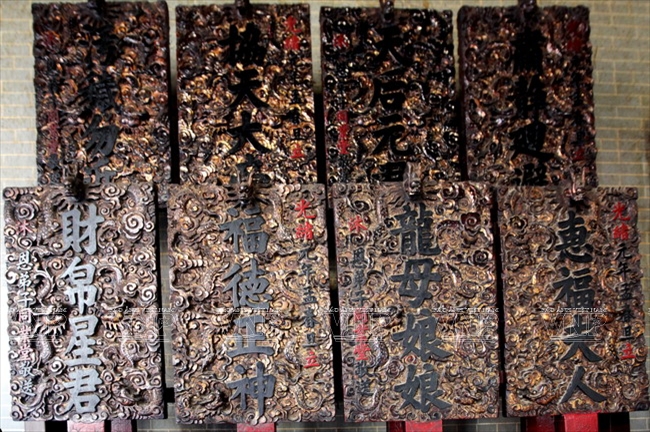 |
|
The stone stele engraved with a legend on Matsu. |
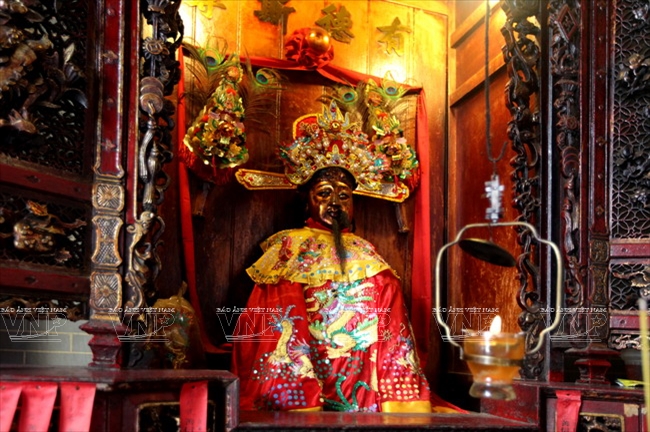 |
|
Ancient statue of the Mon Quan Vuong (entrance guard). |
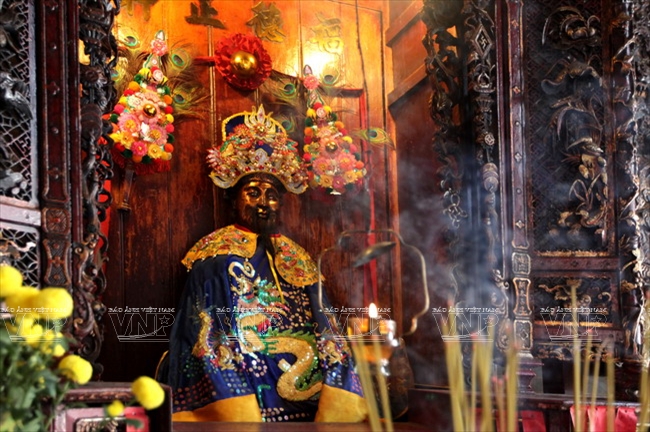 |
|
Ancient statue of the Happiness-Virtue genie. |
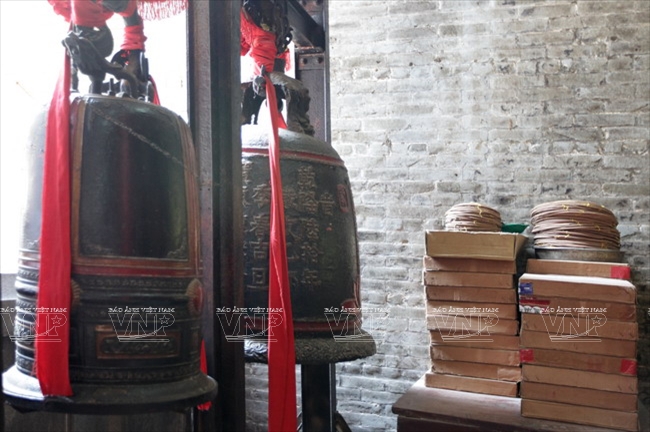 |
|
Two ancient bells. |
|
The parallel sentences and engravings were made skillfully, with sophisticated designs. |
There are now about 400 ancient objects preserved in the temple, including 7 statues of genies, 6 stone statues, 9 stone bells and 2 small bells, 10 horizontal lacquered boards engraved with Chinese characters, 23 parallel sentences, 41 engravings and others. All those objects were made skillfully with sophisticated designs. In addition, there are items donated by the Hoa worshippers including incense holders and incense burners made of sandstone.
Story: Nguyen Vu Thanh Dat
Photos: Dang Kim Phuong
phamtrangnhung



